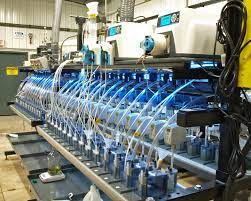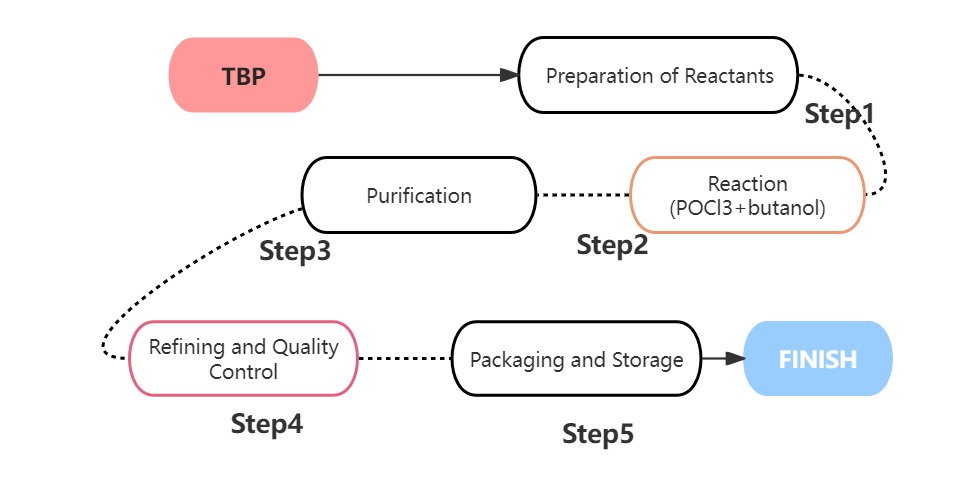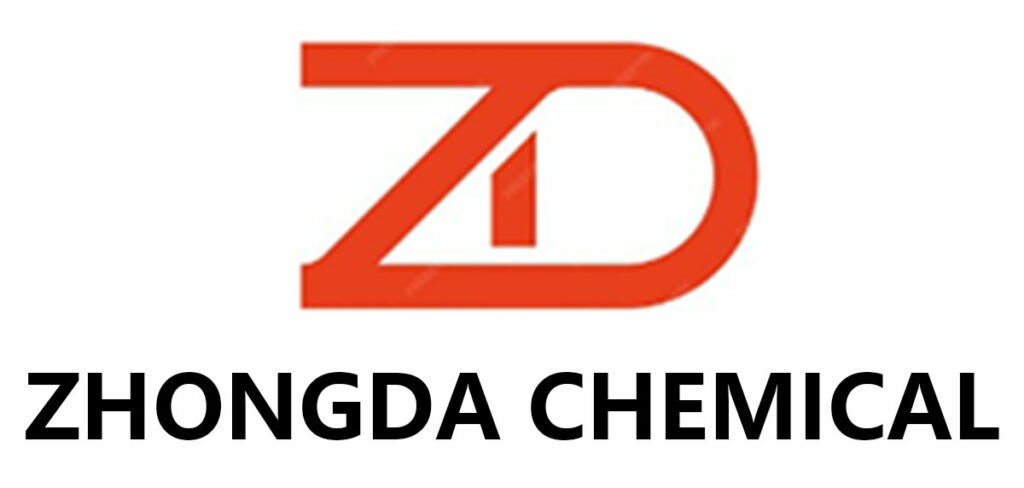構造:
| 外観 | Colorless to slightly light yellow liquid |
| 式 | C12H27O4P |
| CAS番号. | 126-73-8 |
| EC番号. | 204-800-2 |
| HSコード | 2919900020 |
| コンテンツ (%) | ≥99 |
| 密度(20℃)g/ml | 0.978 |
| 酸価(mgKOH/g) | 0.068 |
| Water(H2O)% | ≤0.12 |
| Melting Point | -80 °C(193 K) |
| Boiling Point | 289 °C(562 K) |
| 同義語 | Phosphoric acid, tri-n-butyl ester; tri-n-butyl phosphate; Butyl phosphate; Phosphoric acid tributyl ester; celluphos 4; 未定; n-Butyl Phosphate |
TBP is an effective solvent for a wide range of organic compounds. それ is miscible with
various organic solvents, including hydrocarbons, alcohols,and ethers. This makes it
suitable for use in extraction processes, where it can selectively dissolve and extract
specific compounds from mixtures
TBP has a high affinity for metal ions, particularly those with high charge densities.
It forms stable complexes with metal ions, enabling the extraction and separation
of metals from aqueous solutions. This property is extensively utilized in hydrometallurgy,
such as the extraction of uranium from uraniumore or the recovery of valuable metals
from spent nuclear fuel.
TBP exhibits flame-retardant properties, making it useful in applicationswhere fire
resistance is desired. It finds use as a flame retardant in plastics,polymers, and other
materials to improve their fire safety characteristics.



TBP is extensively used in the extraction and recovery of metal ions from ores, concentrates,
and aqueous solutions. It plays a crucial role in the production of nuclear fuel, where it
facilitates the extraction of uranium from uranium ore. それ is also employed in the
reprocessing of spentnuclear fuel to recover valuable metals like uranium and plutonium.
TBP’s excellent solvent properties make it suitable for use in various extraction processes.
It is employed in the separation and purification of organic compounds, such as the
抽出of rare earth elements, separation of organic acids, and purification of
pharmaceuticalintermediates.
Due to its flame-retardant properties, TBP is utilized in the production of flame-retardant
plastics, polymers, and coatings. It helps to reduce the flammability and improve the fire
safety of these materials.
TBP finds use as an anti-foaming agent, plasticizer, and wetting agent in industrial
applications. It can stabilize process fluids, reduce foam formation, and enhance the
performance of certain
manufacturing processes.

Phosphorus oxychloride (POCl3) and butanol (C4H9OH) are obtained as starting 材料.
POCl3 is typically synthesized by the reaction of phosphorus 三塩化物 (PCl3) with oxygen
or chlorine.
The reaction between POCl3 and butanol takes place in the presence of a catalyst, usually
a strong acid such as sulfuric acid (H2SO4). The reaction is an esterification process,
where the hydroxyl (-OH) group of butanol reacts with the phosphorusoxychloride to
form the ester, Tributyl Phosphate (未定), along with the release of hydrogen chloride
(HCl) as a byproduct.
After the reaction, the crude TBP is obtained. It is typically a mixture of TBP, unreacted
butanol, and other impurities. The crude TBP is then subjected to purification steps to
remove these impurities. Purification techniques may include distillation, solvent extraction,
or other separation processes to obtain pure TBP.
The purified TBP is further refined to meet specific quality requirements. This may involve
additional purification steps, such as filtration or adsorption, to remove any remaining
impurities and ensure the desired purity of the final product. Quality control measures, such
as testing for chemical composition and physical properties, are employed to ensure that the
TBP meets the specified standards.
Once the TBP has been produced and refined, it is packaged into suitable containers, such as
drums or tank farm.
1. 受入検査: 主な原材料, such as phosphorus trichloride and n-butanol,
内容が検査される, appearance and other main properties.
2. 給餌検査: 原料供給の原則は先入れ先出しです, and the 外観
主要原材料の品質に大きな変化がないかを無作為に検査します。
給餌前の保管条件.
3. 生産工程におけるバッチサンプリング: 生産工程中, の主要なインデックス
製品の各バッチ: 含有量と酸価は異なる期間で3回検査されます.
4. 保管検査: 各バッチ (6 トン) 保管前に検査されます.
5. 出荷検査: 顧客の要求量に応じて, 製品は
サンプリングして検査した.
6. 出荷前検査: 顧客の要求に従って, third party inspection can be
carried out on the products before shipment.
外見: 外観検査
純度分析:ガスクロマトグラフィー (GC)
酸価:電位差滴定
含水量:水分計
屈折率:屈折計
密度:密度計

というコンセプトを追求している会社です。 “継続的な革新, 一流の追求”, 国内外の顧客に高品質の製品と満足のいくサービスを提供したいと考えています.